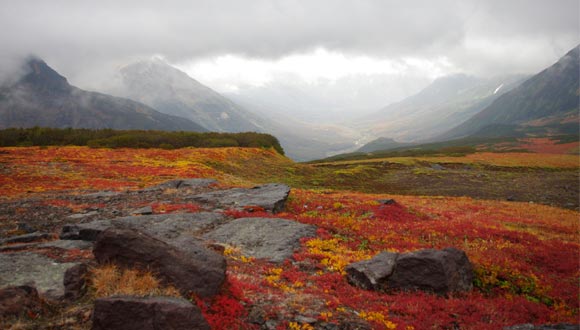Taller species are taking over in a warming Arctic
Until now, the Arctic tundra has been the domain of low-growing grasses and dwarf shrubs. But new, taller plant species have been slowly taking over this chilly neighborhood, report an international group with the participation of researchers from CSIC-CREAF.

The study, initiated by a team of researchers supported through the German Centre for Integrative Biodiversity Research (iDiv), analyzed the most comprehensive data set on plants in the Arctic tundra available. The study encompassed almost 120 tundra sites, most of them located in Arctic regions of Alaska, Canada, Iceland, Scandinavia and Siberia.
"The increase in height we saw was not just in a few sites but nearly everywhere," says lead author Dr. Anne Bjorkman, who now works at the Senckenberg Biodiversity and Climate Research Centre and who conducted the study at the iDiv research centre, the University of Edinburgh, and Aarhus University.
The researchers identify climate warming as the underlying cause. Temperatures in the Arctic have risen by about 1 degree Celsius in summer and 1.5 degrees in winter over the three decades covered by the study, some of the fastest rates of warming on the planet. A detailed analysis showed that not only do individual plants grow taller with warmer temperatures, but that the plant community itself has also shifted. “Taller plant species, either from warmer pockets within the tundra or from southern or lower elevation areas, have spread across the tundra”, says Prof. Josep Penuelas, from CSIC-CREAF. This move is far from over, as Bjorkman points out: “If taller plants continue to spread at the current rate, the plant community height could increase by 20 to 60% by the end of the century.” Surprisingly, the researchers found no evidence that this “invasion” of taller species is currently leading to a decline in shorter species.
Arctic regions have long been a focus for climate change research, as the permafrost underlying tundra vegetation contains one-third to half of the world’s soil carbon. When the permafrost thaws, greenhouse gases could thus be released. An increase in taller plants could speed up this process as taller plants trap more snow in winter, which insulates the underlying soil and prevents it from freezing quickly and deeply in winter.
“Although there are still many uncertainties, taller tundra plants could fuel climate change, both in the Arctic and for the planet as a whole”, said Dr. Oriol Grau from CREAF.
In contrast to plant height, researchers found that six other measures, such as the size of leaves and their nitrogen content, showed no consistent change over the last thirty years. These other plant characteristics were strongly influenced by moisture levels in addition to temperature.
The researchers conclude that the response of the plant community as a whole to climate warming will depend on whether the tundra becomes wetter or drier over time. Rüger says: “In order to predict how the plant community in the tundra will react in the future, it is necessary to not only take into account alterations in temperature, but also in water availability. If precipitation or the water cycle change, or if the timing of snowmelt shifts, this may have severe effects on the tundra vegetation.”






